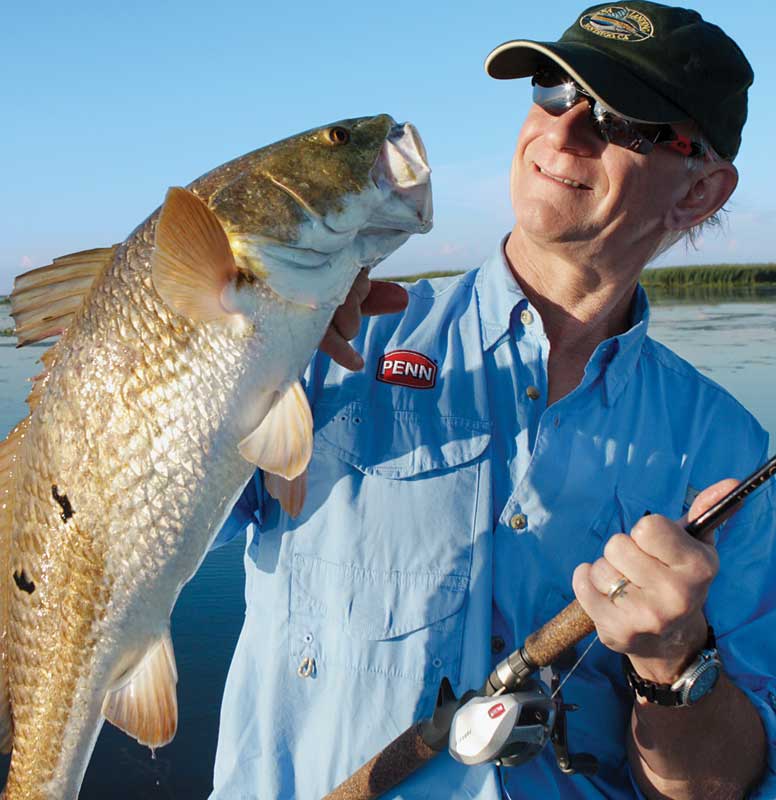
Reconsidering Redfish
A lot of fishing folks are trying to whip up a frenzy of angst over the problems with certain recreationally important species. This is being done to generate new membership or placate existing members as much as to benefit the fish. With all this turmoil, it is refreshing to have some good news to report. Florida’s red drum, or redfish, population is doing well in certain areas, and the state wants to liberalize the bag limit. But some are saying “not so fast!”
This past winter, the Florida Fish and Wildlife Conservation Commission (FWC) proposed a draft rule to increase the daily bag limit for red drum in certain management areas from one to two. Currently still under consideration, it is the culmination of some extensive research and analysis by scientists at the Fish and Wildlife Research Institute. The process started with a red drum stock assessment back in 2009. After presentation to the FWC, the assessment was broken down regionally into the same management areas as for spotted seatrout. This new analysis was presented to the FWC in the fall of 2010. What it showed was that the redfish in the northeast stock area and the northwest stock area were doing well and that escapement was above the threshold. Those in the southern areas were hovering around the escapement threshold or closer to the biological threshold. For some, the big question was the general downward trend of these indexes since their highs in the late 1980s.
Historically, the FWC had set the escapement threshold at 30 percent, but pressure from the angling public for a better trophy fishery caused it to increase the threshold to 40 percent in 2007. Escapement is defined as the proportion of fish surviving through age 4 in relation to the number that would have survived to that age without a fishery. The measurement of escapement of juveniles in the estuary is sufficient to protect the offshore population of adult spawners that maintain and build the population. The offshore fish are hard to assess, but this proxy for spawning potential seems to work.
Also, in terms of a quality product for the table, the larger fish are not as good as the smaller ones. That was the reason for the blackened redfish craze. Something had to be done in the cooking process to improve what was otherwise less desirable. This fish is now managed with a slot limit of 18 to 27 inches total length. This is one way to improve the normal size distribution of a fish population over time, as long as all the fish are not pressured too hard by the time they get to 27 inches.
The FWC is concerned about some of the impacts of federal management decisions in the Southeast on recreational anglers, and that is part of the reason why it has been looking at increasing the redfish bag limit. While its support of the recreational fishing industry is appreciated, the Coastal Conservation Association of Florida thinks that the FWC is missing the big picture and should at least wait until the end of 2011, when a new stock assessment on redfish is due to be released.
One of CCA-FL’s concerns is that, with the long-term escapement trends declining and the inshore fishing pressure increasing due to short seasons and closures in federal waters, there will be a substantial increase in pressure on this fish even without an increase in the bag limit. The trend on the Gulf Coast has escapement dropping from 60 percent in 1991 to something around 30 percent in 2011. On the Atlantic side, it has dropped from 80 percent to approximately 45 percent. Conversely, the trend in fishing effort has grown from half a million trips in 1982 to 2 million in 2006 on the Gulf Coast and from approximately a quarter-million to 2 million on the Atlantic coast. Those trends do not suggest that increasing the effort even further would be the right move for the long-term sustainability of the fish. The continued shift in demographics to the southeast would also indicate a potential increase in effort.
The desire of the FWC to expand the fishing opportunities of inshore anglers is commendable but, interestingly, did not garner a lot of support at the public hearings on the issue. Only 8 percent of those attending the public hearings supported the increase. However, an online survey showed that 60 percent supported the increase in the northern areas. We do not know what mechanism, if any, was used to stop repeat online votes.
Our philosophy in the past might have been “take the money and run.” We would have supported the bag increase because it would have increased the recreational share if it became allocated. In this case, red drum are currently a game fish, and the biggest consideration is the future sustainability of this fishery. So we’d advocate a “no, thank you” position. What is the harm in waiting a year for updated science? In April, the FWC came to the same conclusion and postponed the decision until its November meeting, when it will have updated assessment information on the redfish stocks. We applaud this choice.









